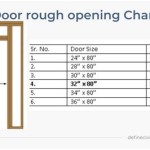What School Do You Need To Go To Be An Interior Designer?
Becoming a successful interior designer typically involves a combination of artistic talent, technical skills, and a strong understanding of design principles. While innate creativity is valuable, formal education provides the structured learning and practical experience necessary to thrive in this competitive field. Choosing the right educational path is a crucial step in establishing a successful career in interior design.
The specific type of school required to become an interior designer can vary based on individual career goals and desired level of expertise. Options range from certificate programs to bachelor's and master's degrees, each offering a different depth of knowledge and skill development. The selection should align with the individual's aspirations and resources.
While experience can be gained through on-the-job training and internships, a formal education provides a foundational understanding of the principles and practices that are essential to the profession. This knowledge base allows designers to approach projects with a holistic perspective, considering not only aesthetics but also functionality, safety, and sustainability.
Educational Options for Aspiring Interior Designers
Several educational pathways exist for individuals seeking to enter the field of interior design. These options vary in duration, cost, and the depth of knowledge they provide. Choosing the right path depends on the individual's career aspirations and current level of education.
One option is a certificate or diploma program in interior design. These programs are typically shorter than degree programs, often lasting from one to two years. They provide a focused education in the fundamental principles of design, space planning, and drafting. Certificate programs are often offered by vocational schools, community colleges, and specialized design institutions.
These programs are suitable for individuals who wish to acquire practical skills and enter the workforce quickly. They may also be a good starting point for those who are uncertain about committing to a longer degree program. However, certificate holders may find that their career advancement opportunities are limited compared to those with a bachelor's degree.
Another option is an associate's degree in interior design. These programs typically require two years of study at a community college or vocational school. They provide a more comprehensive education than certificate programs, covering a wider range of topics such as design history, color theory, and computer-aided design (CAD).
An associate's degree can be a good option for individuals who want a more in-depth education but are not yet ready to commit to a four-year bachelor's degree. It can also serve as a stepping stone to a bachelor's degree, with many institutions allowing students to transfer credits earned in an associate's program.
The most common and often preferred educational path is a bachelor's degree in interior design. These programs typically require four years of study at a university or design school. They provide a comprehensive education in all aspects of interior design, including design theory, space planning, building codes, and project management.
A bachelor's degree in interior design is widely recognized by employers and is often required for professional certification. It provides graduates with the skills and knowledge necessary to pursue a wide range of career opportunities in residential, commercial, and institutional design.
For individuals who wish to pursue advanced study and specialize in a particular area of interior design, a master's degree is an option. These programs typically require one to two years of study and are often pursued by those who wish to teach, conduct research, or advance into leadership positions.
Master's programs in interior design may focus on areas such as sustainable design, healthcare design, or hospitality design. They provide students with the opportunity to develop advanced skills and knowledge in a specific area of interest.
Key Skills Developed in Interior Design Programs
Regardless of the specific type of program chosen, interior design education focuses on developing a range of essential skills that are crucial for success in the field. These skills encompass both creative and technical aspects of design.
One crucial skill is space planning. This involves the arrangement of furniture, fixtures, and equipment within a space to maximize functionality and aesthetics. Students learn to analyze the needs of clients and create layouts that meet those needs while adhering to building codes and accessibility standards.
Another important skill is drafting and CAD (Computer-Aided Design). Interior designers use drafting techniques to create detailed plans and elevations of spaces. CAD software is used to create digital models and renderings of designs, allowing clients to visualize the finished product. Proficiency in both traditional drafting and CAD is essential for effective communication and project execution.
Knowledge of building codes and regulations is also crucial. Interior designers must understand and adhere to local building codes, fire safety regulations, and accessibility standards. This ensures that designs are safe, functional, and compliant with legal requirements.
An understanding of materials and finishes is paramount. Interior designers must be knowledgeable about a wide range of materials, including flooring, wall coverings, fabrics, and furniture. They must understand the properties of these materials, their durability, and their suitability for different applications. They must also be able to select materials that meet the client's aesthetic preferences and budget.
Communication and presentation skills are also essential. Interior designers must be able to effectively communicate their ideas to clients, contractors, and other stakeholders. They must be able to create compelling presentations that showcase their designs and persuade clients to adopt their proposals. Strong communication skills are crucial for building relationships and managing projects effectively.
Design theory and history provide a foundational understanding of the principles that guide design decisions. Students learn about different design styles, historical movements, and the evolution of design aesthetics. This knowledge allows them to create designs that are both aesthetically pleasing and historically informed.
Accreditation and Professional Certification
When choosing an interior design program, it is important to consider accreditation. Accreditation is a process by which an independent organization evaluates the quality of an educational program and determines whether it meets established standards. A program accredited by a reputable organization, such as the Council for Interior Design Accreditation (CIDA), indicates that the program has met rigorous standards for curriculum, faculty, and resources.
Graduating from an accredited program can be advantageous for several reasons. It may be required for professional certification and licensure in some jurisdictions. It also demonstrates to employers that the graduate has received a high-quality education and is well-prepared for the profession.
After completing their education, interior designers may choose to pursue professional certification. The most widely recognized certification is the National Council for Interior Design Qualification (NCIDQ) certification. This certification requires passing a comprehensive examination that assesses the candidate's knowledge and skills in all areas of interior design.
NCIDQ certification is often required for licensure in states that regulate the practice of interior design. It also demonstrates to clients and employers that the designer has met a high standard of professional competence. Holding NCIDQ certification can enhance career opportunities and increase earning potential.
Some states require interior designers to be licensed in order to practice. Licensure requirements vary by state but typically include a combination of education, experience, and examination. Licensing ensures that interior designers meet minimum standards of competence and protects the public from unqualified practitioners.
Continuing education is also important for interior designers. The field of interior design is constantly evolving, with new materials, technologies, and design trends emerging regularly. Staying current with these developments is essential for maintaining professional competence and providing clients with the best possible service.
Interior designers can pursue continuing education through a variety of sources, including industry conferences, workshops, and online courses. Many professional organizations offer continuing education credits that can be used to maintain certification or licensure.
Ultimately, the "right" school for interior design depends on individual circumstances and career goals. Considering program accreditation, the curriculum offered, the qualifications of the faculty, and the availability of internship opportunities is crucial. Thorough research and self-assessment are key to making an informed decision that sets the stage for a successful career in interior design.

10 Best Interior Design Schools In The Us Decorilla

Ontario Scholarships How To Become An Interior Designer

10 Best Interior Design Schools In The Us Decorilla

How To Become An Interior Designer In 2024 Yorkville

Interior Design School Of Planning And Construction

Interior Design Schools Ccidc

The Best Interior Design Schools In Usa Laskasas

Interior Design Career Advantage Orange Coast College

How To Become An Interior Designer Without A Degree Or Going Back School

The Best Interior Design Schools In Usa Laskasas
Related Posts








